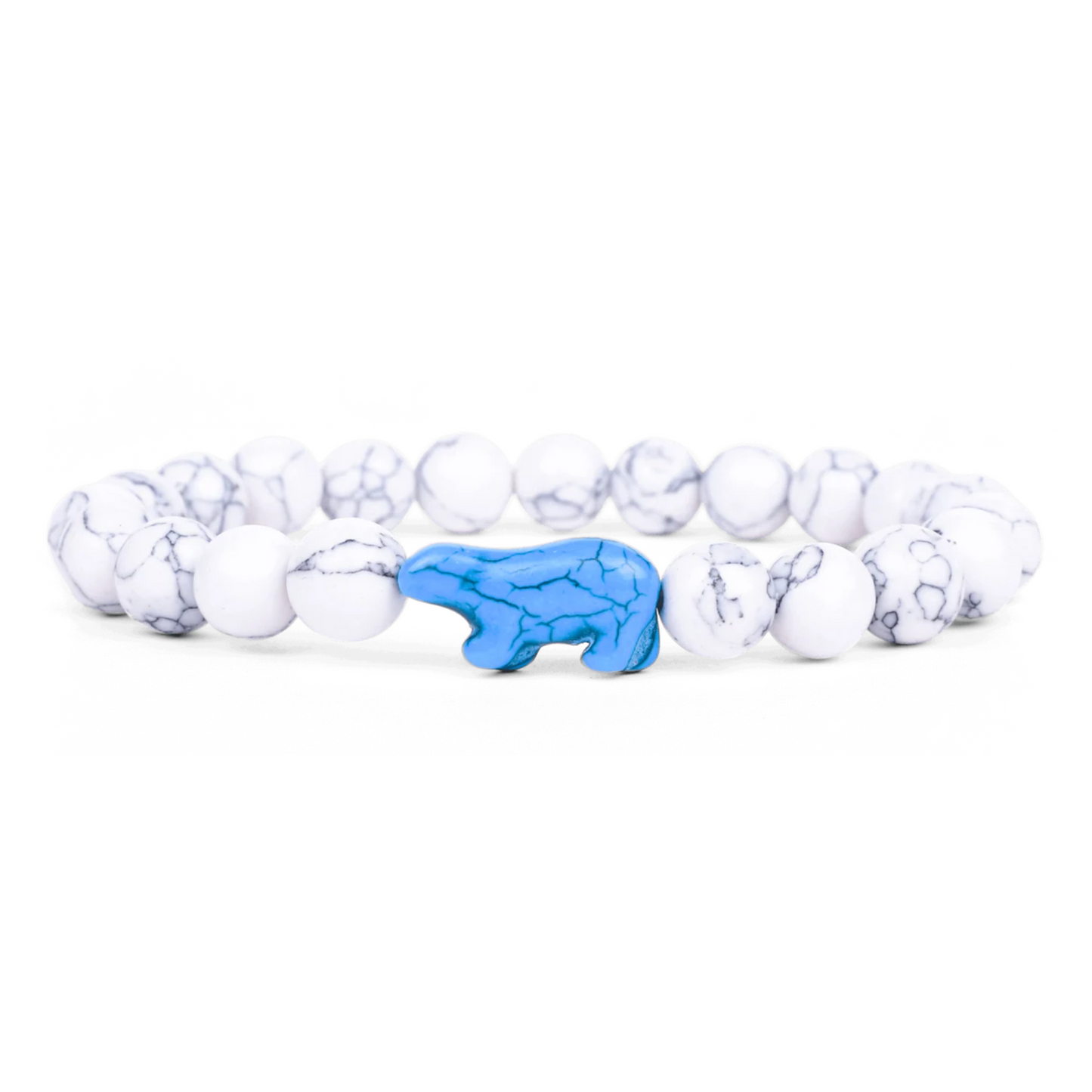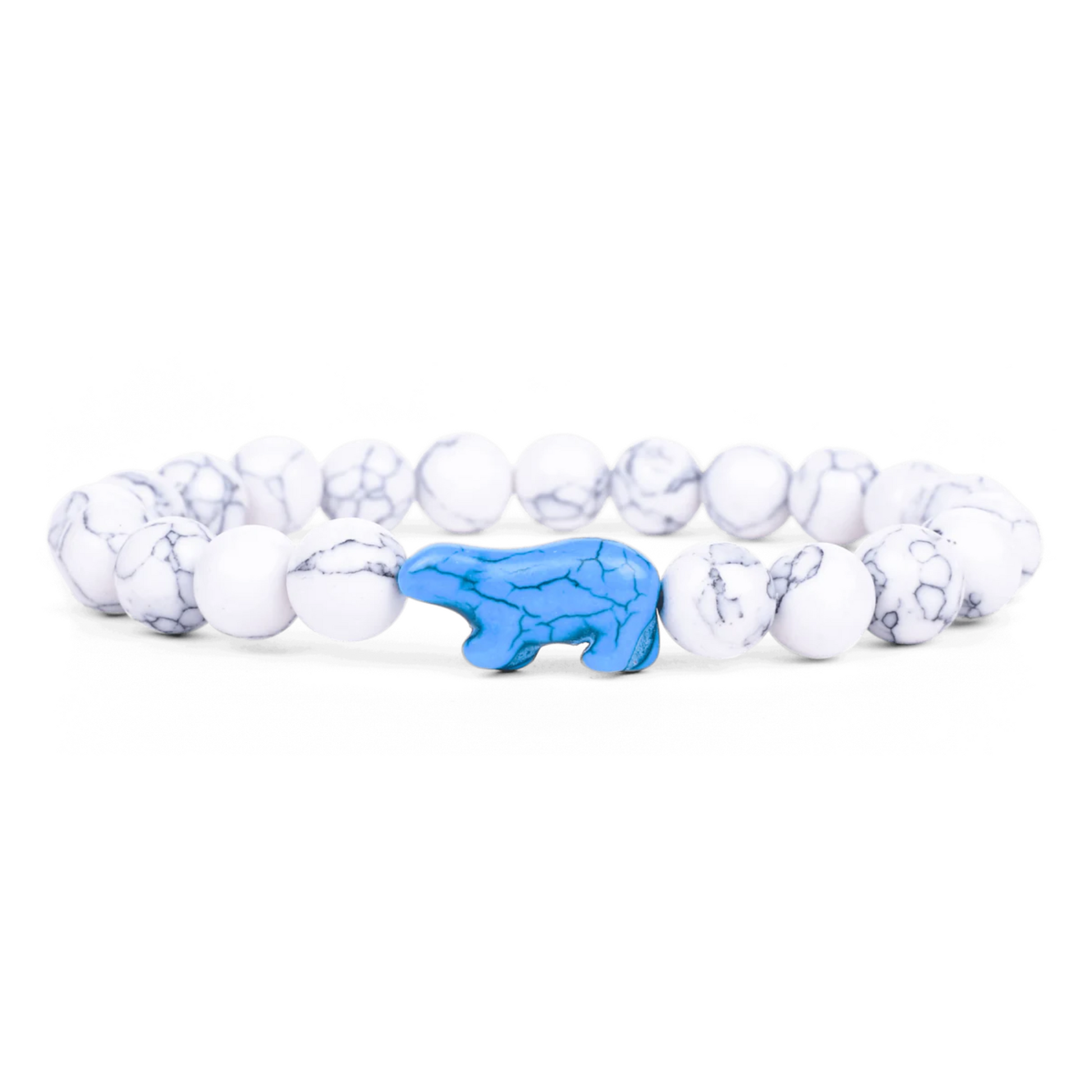Fahlo
Animal Tracking Bracelet - Venture Polar Bear - Arctic White
Animal Tracking Bracelet - Venture Polar Bear - Arctic White
Couldn't load pickup availability
Each bracelet comes with a different polar bear to track, so add as many as you would like! A portion of proceeds are donated to Polar Bears International, who specializes in polar bear research and works to protect wild polar bears.
Learn your polar bear's name and get their picture. Gain knowledge of their amazing stores, how many cubs they have, and follow their incredible venture on an exclusive tracking map.
- Brand: Fahlo
- Stone: Arctic White
- Each order helps support the Polar Bears International
- Sizing: Elastic, one size fits most
- QR code provided to unlock interactive map - compatible on smart phones only.
How does tracking work?
- Tracked via GPS collar or fur tag
- This animal’s safety guarded with the Fahlo Protection Ping™
Every Fahlo tracking experience includes the Fahlo Protection Ping™. This indicates each animal’s unique path may be live, delayed, or historical based on required safety protocol in accordance with our nonprofit partners.
While the experience of following an animal’s journey remains the same for you, we work behind the scenes with our partners to ensure this experience is presented in a way that keeps the animals safe, one step or splash at a time.
Why are polar bears tracked?
“The GPS collars allow researchers to track polar bears, helping us learn about their movements in response to sea ice movement as well as loss caused by climate change. Because polar bears prefer to roam far out on sea ice where it is dangerous for humans to travel, data from GPS collars gives scientists a rare glimpse into the lives of polar bears, including the habitats they use and the vast distances they travel.” – Polar Bears International
How are polar bears tracked?
Historically, polar bears have been tracked primarily using GPS collars built with flexible, synthetic material that sheds water and ice. Collars are designed to stay flexible in cold temperatures, but are strong enough to withstand Arctic marine conditions for at least one year. Inside the collar’s casing, there is a battery and a transmitter that transmits locations to a satellite. All collars are a small fraction of the bear’s weight.
The collars have a release mechanism with an internal clock that researchers can program. Researchers usually set the timer so that the collar will fall off shortly before the batteries are drained and the collar is no longer transmitting. Also, the collars are attached with steel nuts and brass bolts that eventually corrode in a saltwater environment, causing the collar to fall off even if the release mechanism fails. Once they fall off, a GPS location allows researchers to find the collar (if in a retrievable spot), download any stored data, refurbish, and send it out again.
Does tracking harm the polar bears?
Understandably, there are concerns about the impacts of collaring and human interference on wildlife. Polar bear researchers care deeply about the health of their study animals and regularly assess the impacts of different types of research and adjust as needed.
The most recent study on the long-term impacts of collars on polar bears evaluated the extent to which capture, collaring, and handling may influence polar bear activity, body mass, body condition, reproduction, and survival. Polar bears had a reduction in movements for several days after capture, but this was short-term. There were no long-term effects found on body condition, reproduction, or cub survival. This study showed capture and collaring are not contributing to observed changes in body condition, reproduction or survival seen in the polar bear population.
However, researchers continue to refine methods, make trackers smaller, and find the least invasive ways to study polar bear populations to help inform the best ways we can protect them.


